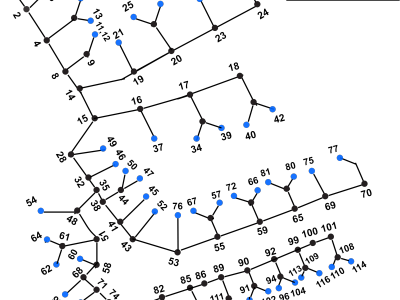power distribution
This dataset contains the data associated with the electrically equivalent model of the IEEE Low Voltage (LV) test feeder for use of the distribution network studies. This dataset is for the letter entitled:" A Reduced Electrically-Equivalent Model of the IEEE European Low Voltage Test Feeder".
- Categories:
 2595 Views
2595 Views
This provides the code and data used in the paper "Optimal EV Scheduling in Residential Distribution Networks Considering Customer Charging Preferences" by Mailys Le Cam and Barry Hayes.
Some material has been adapated from the OpenDSS help files: http://smartgrid.epri.com/SimulationTool.aspx Some data has been taken from the IEEE test feeders archive: http://sites.ieee.org/pes-testfeeders/
- Categories:
 720 Views
720 Views
This dataset contains the catalogs of equipment used to build the following synthetic distribution systems using RNM-US.
a) Greensboro (GSO) Synthetic System V0.2
b) San Francisco Bay Area (SFO) Synthetic System V0.8
The synthetic distribution system has been built using the U.S. Reference Network Model (RNM-US), and it includes the low voltage system, distribution transformers, medium voltage system, primary substations, sub-transmission system and transmission substations.
- Categories:
 319 Views
319 ViewsThis work focuses on using the full potential of PV inverters in order to improve the efficiency of low voltage networks. More specifically, the independent per-phase control capability of PV three-phase four-wire inverters, which are able to inject different active and reactive powers in each phase, in order to reduce the system phase unbalance is considered. This new operational procedure is analyzed by raising an optimization problem which uses a very accurate modelling of European low voltage networks.
- Categories:
 645 Views
645 ViewsThis report outlines the derivation of the first-, second-, and third-order Taylor series expansions of the power flow solution; it is the Electronic Companion of the following paper:
R. A. Jabr, “High-order approximate power flow solutions and circular arithmetic applications,” IEEE Transactions on Power Systems, vol. 34, no. 6, pp. 5053-5062, November 2019.
The derivation is carried out in complex variables via the use of Wirtinger calculus.
- Categories:
 407 Views
407 Views

